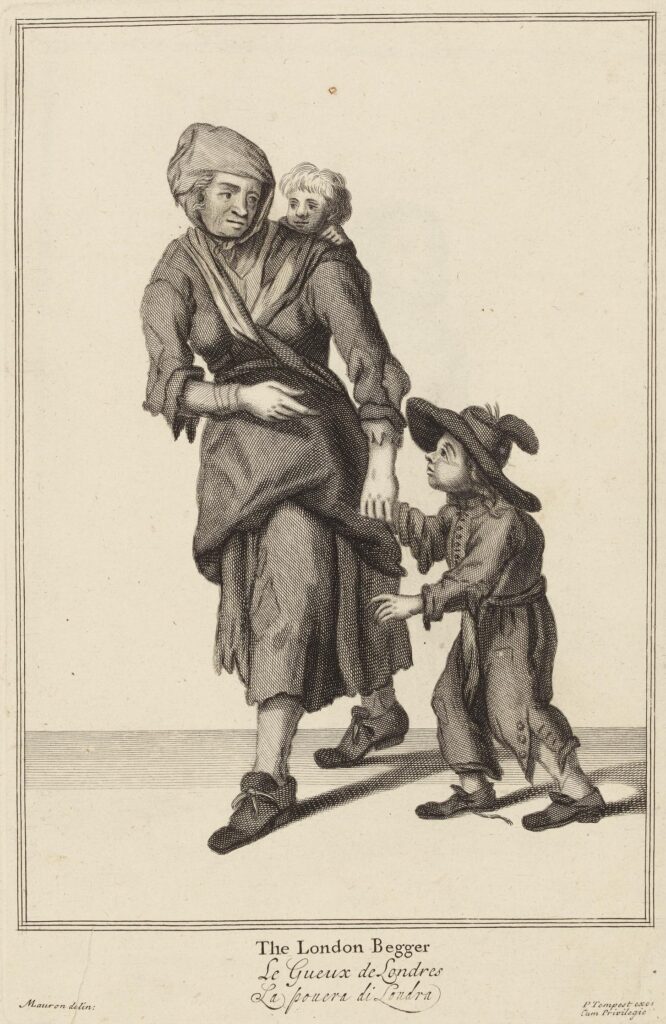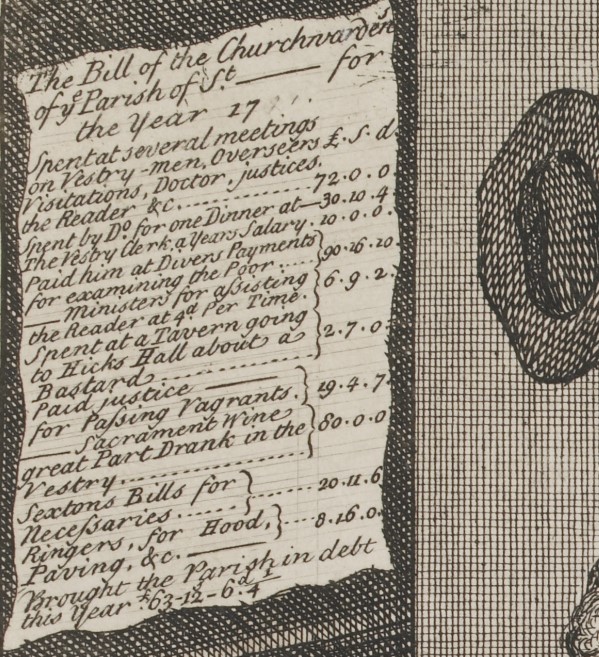Read the stories of four that either survived or succumbed to the flames, and how they reemerged from the ruins.

Churchwardens were usually powerful and well-connected men in the community. They weren’t necessarily required to own property in order to qualify for the position. However, these men all tended to be ‘substantial householders’, and often held other positions in livery companies and had connections to the Court of Aldermen.
While Churchwardens received no salary, at St Martin Ludgate they could claim expenses of 4d at the coffee house or in the tavern when on official duties. They could also charge 1s 8d for ‘gathering money for the poor’, as well as the more unusual expense of entertaining ‘Sr Christopher Renn’ at the coffee house and tavern for up to £2 for time.
On rare occasions, some elected men might refuse to serve as a churchwarden and would therefore incur a ‘fine’. Although there is no evidence of churchwardens refusing their role at St Martin Ludgate, Thomas Pistor, a member of the church’s Vestry was fined by the Joiners’ Company when he refused a second term as Renter Warden for them in 1704. As well as being used to punish refusing to take office, fines could be issued for all sorts of misdemeanours such as swearing, gambling and failure to attend church. In some churches fines were an important part of their income.
See more about Crime and Punishment in early modern England.

Churchwardens were the leaders of a parochial committee called the Vestry, taking its name from the parish church’s vestry or sacristy, where they would meet. They were elected by their peers for a one-year term and were presided over by the vicar or rector. They had responsibilities for local amenities, the welfare of the inhabitants, care of the poor and appointment of officials, such as the beadle, sexton and women pew openers.
The Vestry’s decisions, as well as small details of parish life, often survive in the minutes and accounts written down by the clerk of each church. Account books for St Martin Ludgate reveal some of the everyday activities which were paid for, such as washing tunics worn by the vicar (called surplices) and the purchase of soap, candles and a mop.
In St Martin’s vestry meetings took place five or six times a year while in some churches like St Bride’s they were almost weekly. Often the minister would be present as he was the spiritual lead in the parish, but in all practical matters he was subject to the collective decisions of the vestry. In 1701 the decision was taken in the rector’s absence to move afternoon prayers from 3pm to 6pm.

Maintenance of the church fabric was a major responsibility for churchwardens, which was particularly onerous during the rebuilding programme after the Fire. While the coal tax covered the costs of constructing the building, parishes were required to furnish and decorate church interiors themselves. St Martin Ludgate’s accounts list payments to many trades people: a bell hanger, a glazier, an upholsterer, a paver, a stonecutter, several carpenters and many other unnamed people. William Gray, a joiner, received the highest payment of £400. In 1688 it was recorded in the vestry minutes that a special levy was agreed to pay Mr Gray for ‘screens’ and a further £175 was raised.


Churchwardens were also directly responsible for the welfare of local residents. They made payments to the poorest and most vulnerable in the parish, which could become a substantial charge on church funds. The accounts are full of such payments: to ‘a poor maide given to drink 2s’, ‘given in charity for a shipwreck 1s, and 12 shillings (£68) caring for ‘a poor maide dying of the smallpox’. Larger amounts were frequently paid to women in labour, for the long-term care of sick people, particularly in Bedlam, and for the burial of many infants.

Details from 'A Parish Feast', a satirical print exposing perceived extravagances of some churchwardens.
However, not everyone was given support. There are many records of people claiming poor relief who had not lived forty days in the parish and were therefore described as ‘burthensome’ and considered a drain on the poor rate. It became the role of the constable, or other vestry officer, to remove them to their former parish to save on funds. Thomas Mason was gifted 10 shillings (£57) if he promised to never return. But Anne Waterfall does not seem to have been given even this amount of assistance. The minutes simply say that she was to be ‘removed’ to St Paul’s parish Covent Garden, with her ‘bastard child’, named Sarah.


The double churchwarden chair in St Martin Ludgate is unique in the City. It commemorates with carved initials, Thomas Saffold (TS), a weaver turned astrologer, and Thomas Pistor (TP), a wealthy cabinet maker who lived in Ludgate Hill. Both men were churchwardens in 1690, serving together for four months.
It is not known why the chair bears both sets of their initials. Could they have been great friends or was perhaps the chair a memorial to Thomas Saffold who died about twenty years before Thomas Pistor.
It is possible that Thomas Pistor or one of his apprentices made the chair. However, there is no maker’s mark to confirm this, and it is more likely that William Gray (d.1696), who was paid for extensive joinery work in St Martin’s and other City churches, was the actual maker.
Read the stories of four that either survived or succumbed to the flames, and how they reemerged from the ruins.
Keep up to date with the latest news ...